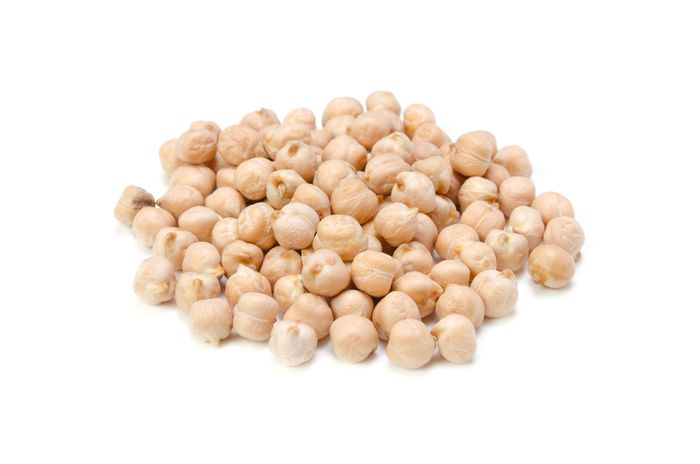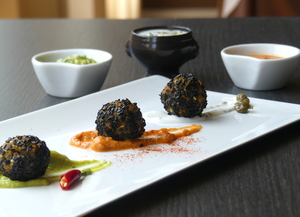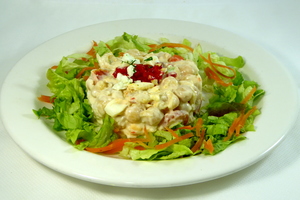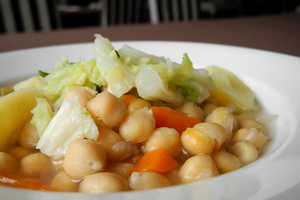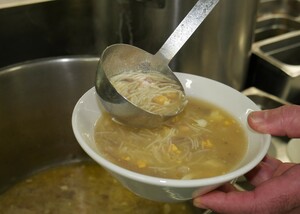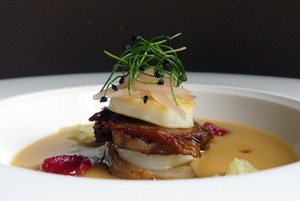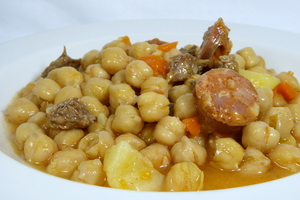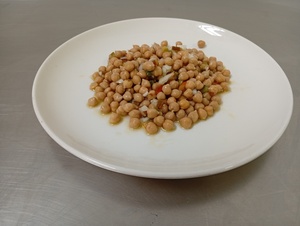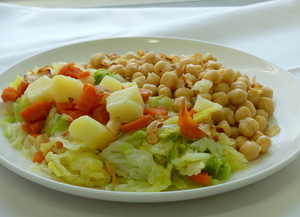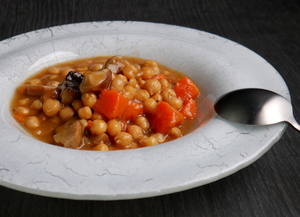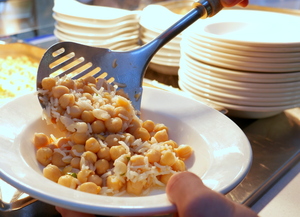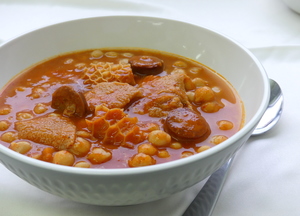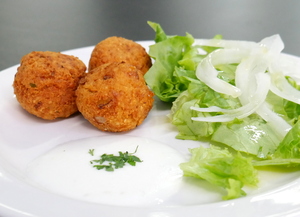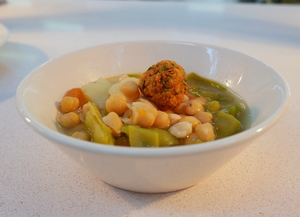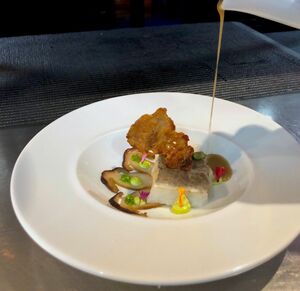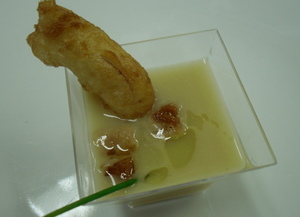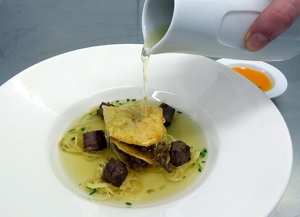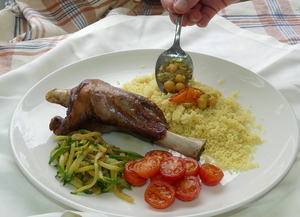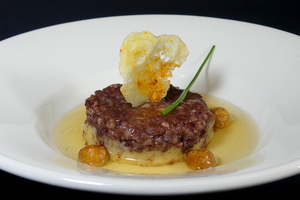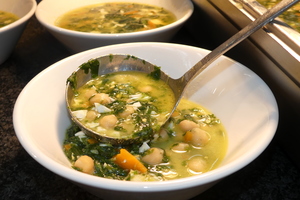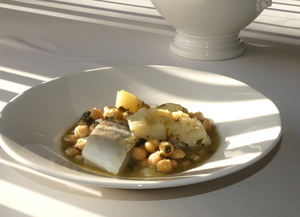Chickpeas
Chickpeas are the seeds of the chickpea plant (Cicer arietinum), a herbaceous plant from the Fabaceae family. The fruit is an egg-shaped legume. It can contain one or two seeds, which are the chickpeas.
There are three main types of chickpeas that differ in their geographical location. In the Mediterranean and the Eurasian zone, they are smaller and their colour varies. The most cultivated chickpeas are the desi type, which is small and yellow or black; the kabul or kabuli, whose size is medium or large and its colour fair; ant the gulabi, which is small, smooth and fair. Nowadays, 90% of the global production belongs to India and Pakistan, but chickpeas are also an important crop in Eastern countries such as Lebanon, Turkey, Syria, Iran, Bangladesh and Nepal, as well as in Colombia, Argentina and Chile.
In Spain, there are five important types. The Castilian chickpea is medium or large in size; it has a spherical shape and a distinctive yellowish colour. It is the most consumed in the country. Another type is the milky white chickpea, which presents a thick and elongated shape, with marked furrows and a white-yellowish colour. It is cultivated mainly in Andalusia and Extremadura. Thanks to its excellent quality, it is the most appreciated by consumers. The veined Andalusian chickpea is also thick and long. It has a stronger taste and it is cultivated mainly in Granada. In this province, the chamad chickpea stands out, a species obtained by the hybridization of the Castilian chickpea. Finally, the pedrosillano chickpea, which is small and almost round and is cultivated in Andalusia, Castile-Leon and Castile-La Mancha.
The main component of chickpeas is carbohydrates, and the most abundant of these is starch. The protein content is important, but this nutrient is insignificant compared to other dry legumes. Besides, those proteins are incomplete because of the deficit of the essential amino acid called methionine. Their lipid content is bigger than in the rest of legumes, as well as their high content of oleic and the linoleic acids, both unsaturated. Furthermore, they contain a high amount of fibre. All in all, the caloric value of chickpeas is higher than the average of dry legumes. Regarding vitamins and minerals, the high level of folates, thiamine or B1 vitamin, calcium, phosphorus, iron, potassium and magnesium are important.
-
Type of dish
- Beers
- Cocktails
- Breakfasts and brunch
- Burguers
- Juices, milkshakes and beverages
- Shellfish
- Bread and pastries
- Pizzas, patty
- Dessert
- Pasta
- Sándwich
- Pastries
- Finger foods
- Ice creams and sorbets
- Legumes
- Salads
- Eggs
- Patty
- liqueur
- Harvard plate
- Main course
- Meats
- Fish
- Birds
- Vegetables
- Soups and creams
- Rices
- Coffee, chocolate and infusion
- Cheeses
- Appetizers and canapes
- Temperature
- Cuisine type
- Additional culinary preparation
- Conservation technique
- Seasonal recipes
-
- Aromatic herbs
- Beverages
- Big game hunt
- Bread and pastries
- Canned goods and pickles
- Cereals
- Condiments, spices and additives
- Cooked, salted, preserved and cold meats
- Dried fruits and nuts
- Dry pulses
- Edible oils and vinegars
- Eggs and derivatives
- Feathered game hunt
- Fish cuts
- Fishes
- Insects
- Kitchen and bakery tecniques
- Kitchen and bakery utensils
- Meat cuts
- Meats
- Milk, cream and derivatives
- Mushrooms
- Offal
- Pasta, rice, flour and derivatives
- Poultry
- Seafood
- Service techniques
- Service utensils
- Vegetables cuts
- Vegetables, fruits, tubers and seaweed

